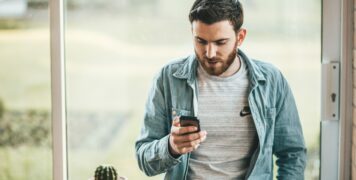Contact
020 4515 6728
info@ccameron.co.uk
Charles Cameron & Associates
Blackfriars Foundry
154-156 Blackfriars Road
London SE1 8EN
Take it to the max
September 13, 2023
Information published was correct at the time of writing
Tips to maximise rental yield from your property portfolio...

“Rental yields may be lower in areas with higher anticipated house price growth – for instance, London and the South East of England.”
Rental yield is a significant parameter for landlords as it represents the annual rental income as a percentage of the total property investment. A 6% to 8% benchmark is typically deemed acceptable when evaluating rental yield. However, it’s important to note that this can fluctuate significantly based on geographical location.
Rental yields may be lower in areas with higher anticipated house price growth – for instance, London and the South East of England. This is primarily due to inflated sale prices in these regions, driven by the potential for significant capital gains. Interestingly, rent levels in these areas remain relatively stable, which could affect the rental yield.
RENTAL INCOME AND CAPITAL APPRECIATION
So, while potential investors might be drawn to areas with high property value growth, they should also consider the impact on rental yield. Balancing these factors can help investors make informed decisions that maximise rental income and capital appreciation. The gross rental yield is calculated by dividing the annual rental income by the property purchase price and multiplying it by 100.
However, net rental yield considers all expenses in letting the property, resulting in a lower figure. To enhance rental yield, landlords can consider several strategies:
Invest wisely: Every property investment should be treated as a business decision, requiring thorough research and negotiation for maximum returns.
Review outgoings: Fixed costs like mortgage payments, insurance premiums and leasehold fees should be scrutinised to identify potential savings.
Invest in emerging areas: Locations with planned regeneration, government investment or major infrastructure projects can offer higher yields. University towns, which allow for Houses of Multiple Occupation (HMOs), can yield higher returns despite higher tenant turnover.
Re-assess rent: Charging higher rent can improve yield but should be reasonable and fair. A letting agent can assist with assessing market rates.
Refurbish/redecorate property: Improving the property condition can justify rent increases and encourage long-term tenancies.
Aim for long-term tenants: Longer tenancies reduce costs associated with regular tenant changes and high maintenance expenses.
Consider allowing pets: Becoming pet-friendly can make your property more appealing and command a higher rent.
Improve energy efficiency: A more energy-efficient property can reduce energy bills, making tenants more willing to pay a bit extra.
Extend your property: If space permits, adding more rentable rooms or increasing living space can boost rental income.
POTENTIAL RETURNS ON DIFFERENT PROPERTIES
Rental yield is an essential tool for comparing potential returns on different properties. For instance, if a flat in one area projects an 8% rental yield and another in another part of town offers 6%, the former might be a better investment, assuming affordability and tenant demand are consistent.
However, using rental yield to compare property investment with other investment forms, such as stocks and shares, is more complex. This is because buy-to-let investments often come with numerous one-time and recurring expenses. These can include maintenance costs, property management fees, insurance and mortgage interest.
COMPREHENSIVE FINANCIAL ANALYSIS
Therefore, when contemplating a foray into the landlord business, factoring in these additional costs is crucial. A comprehensive financial analysis will provide a more accurate picture of the potential return on investment and help make an informed decision. Improving rental yield involves a combination of smart investment, cost management and property enhancements. It’s essential to consider both short-term gains and long-term impacts on tenants.
Don’t forget, our professional friendly advisors are on hand to support you and can help you explore all of your options.



